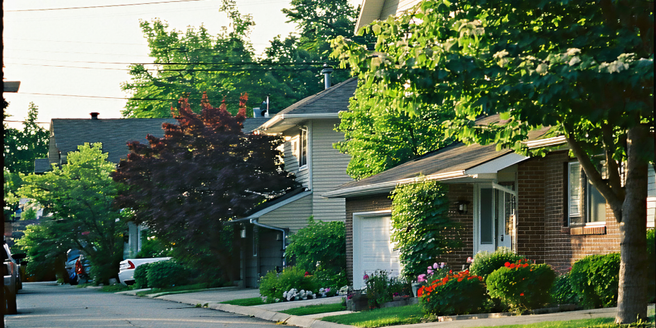Budget-friendly Neighborhood Selection

Understanding Your Budget Constraints
| Income | Expenses | Savings |
| $3,000/month | $2,200/month | $800/month |
| Rent | $800 | 30% of Income |
| Utilities | $150 | 5% Savings |
| Groceries | $300 | 10% of Income |
| Transportation | $200 | 5% Savings |
Identifying Key Neighborhood Features
When considering where to live, identifying key features of a neighborhood is critical for a decision that aligns with your lifestyle and budget. Look for elements such as available green spaces, walkability, school ratings, and crime rates. Think about what amenities you cannot live without and which ones you can compromise on. It’s important to visit the neighborhood at different times of day to get a true sense of the environment. Proximity to cafes, parks, and essential services such as hospitals also plays a significant role. The cultural vibe of a neighborhood including diversity and community events can enrich your living experience, making your daily life more enjoyable. Ensure the neighborhood aligns with your personal and family needs, enhancing life quality without straining your budget.
Researching Cost of Living Variations
Researching the cost of living in different neighborhoods is essential in avoiding financial strain. Start by comparing average rents or property prices to ensure they fit within your budget. Examine utility costs, local taxes, and insurance rates as these can vary greatly. Additionally, consider the cost of commuting if you plan to travel frequently to other parts of the city for work or leisure. Being thorough in investigating costs related to groceries, dining out, and common expenses specific to areas such as parking permits or HOA fees is wise. Cost variations are often linked to proximity to city centers or desirable features, so consider what aligns with your needs. Utilizing online resources and local forums can provide detailed insights into the expected cost of living.
Exploring Public Transportation Options
The availability and accessibility of public transportation options can significantly impact your choice of neighborhood. Evaluate the convenience of bus routes, trains, or subway lines and their connection to your workplace. Consider the cost of commuting time, which can be a major factor in balancing work and personal life. Being close to a major hub might provide more options and competitive rates than neighborhoods with scarce connectivity. If you enjoy an active lifestyle, proximity to parks or recreational areas may also be beneficial. Sustainable transport options like bike lanes can also enhance quality of life. The reliability and frequency of public transport can affect how stress-free commuting will be, so prioritize well-serviced areas.
Evaluating Local Amenities and Services
Local amenities and services greatly impact daily convenience and contribute to neighborhood appeal. A detailed evaluation of what’s on offer is vital. Look for proximity to groceries, medical facilities, and places for leisure. The presence of parks and green spaces nearby can also add significant value to a neighborhood. Residents often appreciate areas with comprehensive amenities, as it enriches living experiences. Consider the availability of gyms, libraries, and community centers which can provide value without additional commutes. Shopping centers may offer convenience, while local shops could enhance the feeling of community. It’s advisable to map out these amenities relative to public transport or walking distances for a complete assessment. Such amenities ease daily life and support a comfortable lifestyle within budget constraints.
Assessing Safety and Community Feel
Safety and community feel are non-negotiable aspects when selecting a neighborhood. Conducting thorough research about neighborhood safety, including crime rates and neighborhood watch initiatives, is advisable. Access to local crime maps and neighborhood forums provides firsthand insights into security levels. A community’s feel can be observed through resident interactions, public gatherings, and local events. Look for diversity and inclusivity, enhancing personal growth and community participation. Ensuring access to essential services such as schools, healthcare, and public transportation is also crucial. Engaging with potential neighbors and visiting the neighborhood at different times of day can offer a genuine feel for the area. Safe neighborhoods with a warm community can ultimately provide a nurturing environment.
Comparing Rental and Housing Prices
Comparing rental and housing prices is fundamental to finding an affordable neighborhood that suits your finances and lifestyle. Evaluate market trends in your area of interest and understand peak and off-peak seasons. Utilize online platforms and local real estate agents to gather comprehensive insights. Consulting with financial advisors can provide guidance on how real estate fits into your overall financial plan. Weigh the benefits of renting versus buying, considering financial stability and job security. Comparing cities versus suburbs could also reveal surprising savings. Be mindful of longer commutes or fewer amenities as trade-offs for lower prices. Identifying affordable options also includes exploring tax implications and seeking properties from trustworthy sources, ultimately securing a budget-aligned living space.
Considering Proximity to Work and Schools
Proximity to work and schools significantly affects daily routines and quality of life. Calculate daily commute times and costs associated with various neighborhoods to ascertain feasibility. It’s important to weigh these factors against any potential benefits of living further away. Determine the proximity to educational institutions that meet family needs, evaluating performance and reputation. Networking opportunities and community engagement are also enhanced when living close to essential services. Proximity allows for convenient access and reduced travel expenses, supporting a balanced work-life environment. Consider schools’ extracurricular offerings which enhance children’s development. Employers increasingly recognize the value of desirable commutes, directly influencing productivity and job satisfaction. A region’s connectivity also opens diverse job opportunities without relocation stress, further underscoring the importance of assessing proximity strategically and thoroughly.
Exploring Community Activities and Events
Active participation in community activities fosters a sense of belonging and engagement that makes a neighborhood feel like home. It is essential to understand the impact of these activities on personal and communal well-being. Investigate local events, clubs, and organizations available for participation or volunteering. The presence of cultural festivals, farmer’s markets, and sports teams enhances community vibrancy, welcoming diverse cultural experiences. By exploring these opportunities, individuals can uncover new passions and skills. Libraries, recreation centers, and social media groups can provide valuable connections, enabling relationship-building and resource-sharing. Neighborhood-oriented activities also encourage social interaction and cooperative efforts, enhancing local pride and enjoyment. Integrating into a community with active engagement options leads to a richer, more connected lifestyle aligning with personal interests.
Making an Informed Decision with Your Budget
Making an informed decision regarding your neighborhood choice boils down to balancing needs and financial capacity. Consider integrating insights gathered from costs of living, amenities, and emotional resonance with an area. It’s crucial to visit the neighborhood at different times of the day to get a real feel for its atmosphere. Budget constraints dictate practical living, so calibrate your expectations accordingly. Utilize diagrams or lists to compare potential choices comprehensively. Additionally, factor in future potential, such as property appreciation trends or urban development, ensuring long-term satisfaction. Consulting with financial advisors or realty experts can refine your perspective, helping to mitigate risks and optimize opportunities for enjoying a neighborhood fitting within financial means and lifestyle aspirations.
